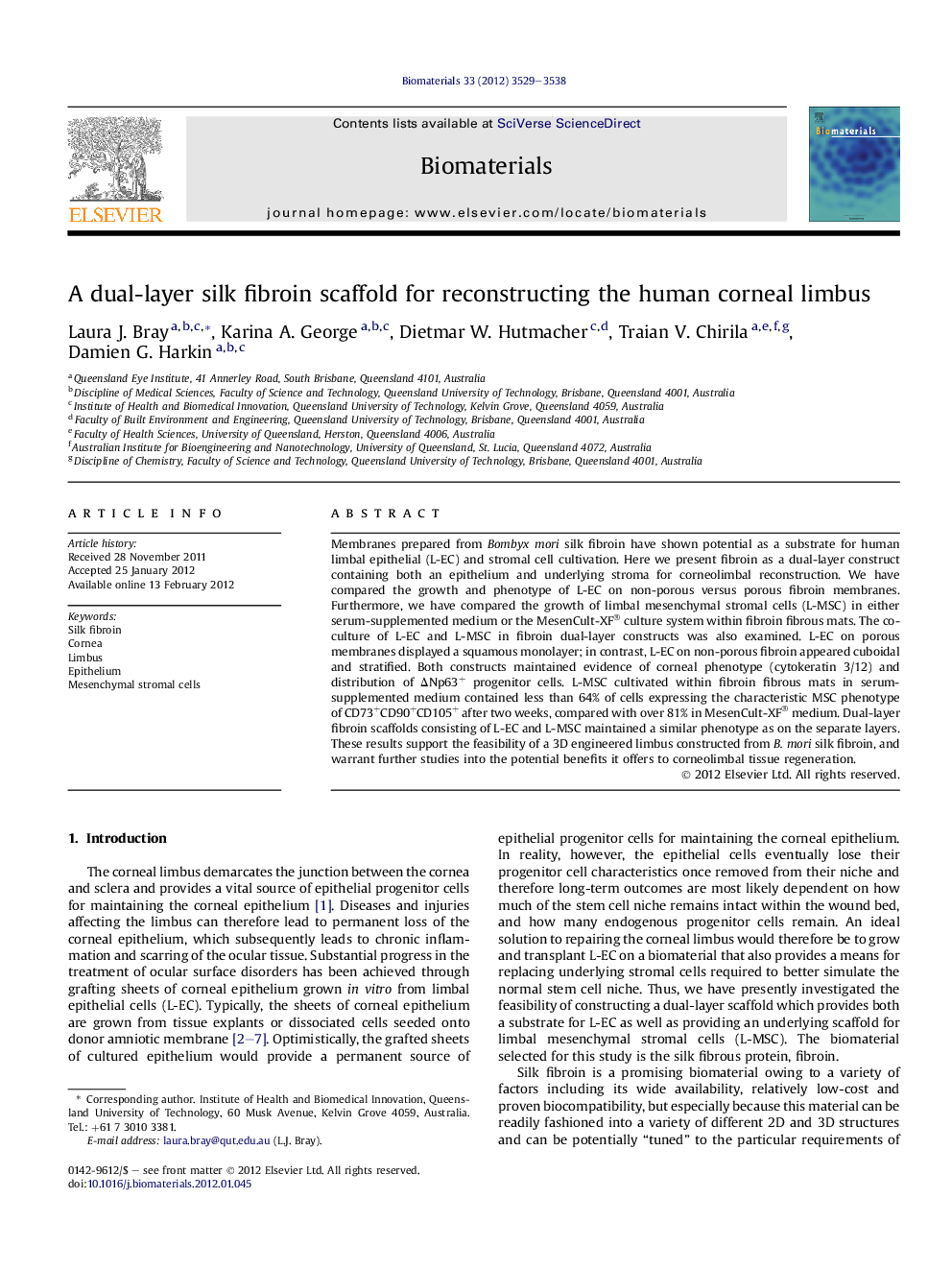| Article ID | Journal | Published Year | Pages | File Type |
|---|---|---|---|---|
| 6828 | Biomaterials | 2012 | 10 Pages |
Membranes prepared from Bombyx mori silk fibroin have shown potential as a substrate for human limbal epithelial (L-EC) and stromal cell cultivation. Here we present fibroin as a dual-layer construct containing both an epithelium and underlying stroma for corneolimbal reconstruction. We have compared the growth and phenotype of L-EC on non-porous versus porous fibroin membranes. Furthermore, we have compared the growth of limbal mesenchymal stromal cells (L-MSC) in either serum-supplemented medium or the MesenCult-XF® culture system within fibroin fibrous mats. The co-culture of L-EC and L-MSC in fibroin dual-layer constructs was also examined. L-EC on porous membranes displayed a squamous monolayer; in contrast, L-EC on non-porous fibroin appeared cuboidal and stratified. Both constructs maintained evidence of corneal phenotype (cytokeratin 3/12) and distribution of ΔNp63+ progenitor cells. L-MSC cultivated within fibroin fibrous mats in serum-supplemented medium contained less than 64% of cells expressing the characteristic MSC phenotype of CD73+CD90+CD105+ after two weeks, compared with over 81% in MesenCult-XF® medium. Dual-layer fibroin scaffolds consisting of L-EC and L-MSC maintained a similar phenotype as on the separate layers. These results support the feasibility of a 3D engineered limbus constructed from B. mori silk fibroin, and warrant further studies into the potential benefits it offers to corneolimbal tissue regeneration.
